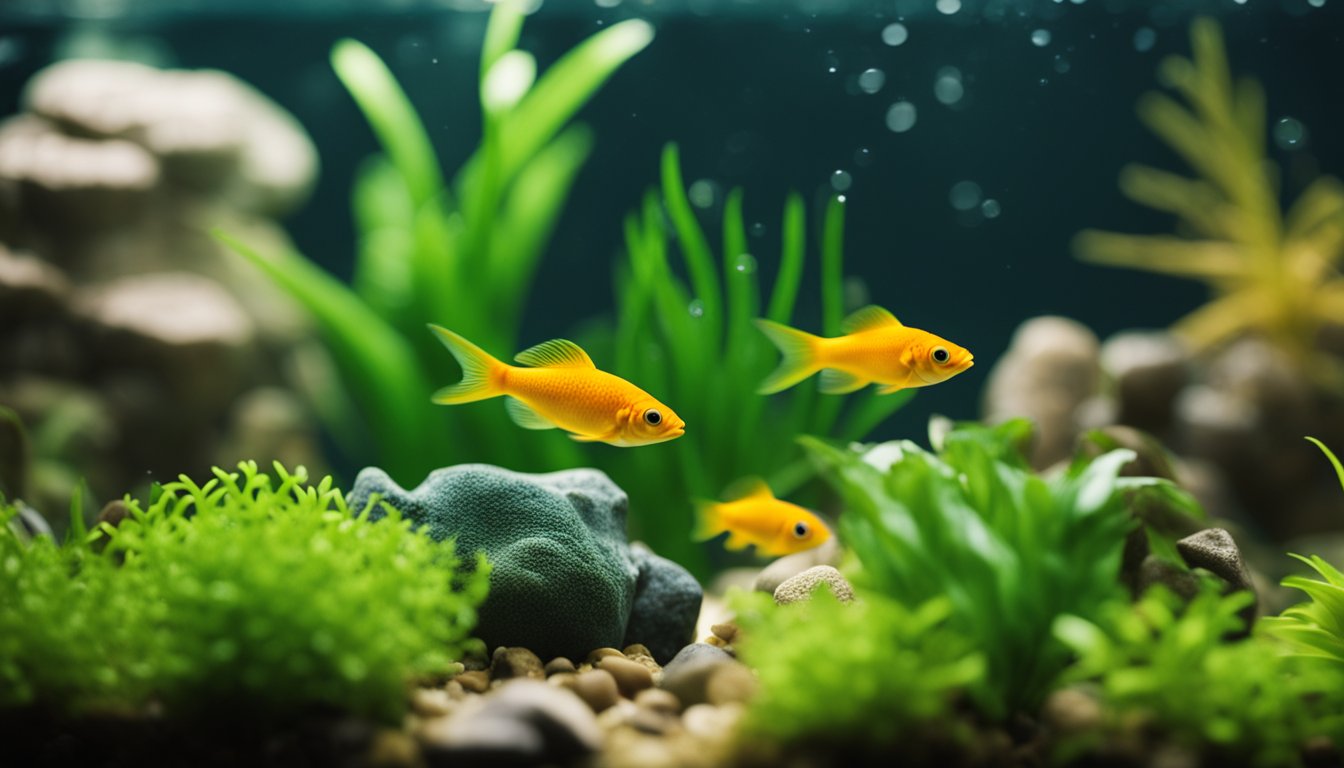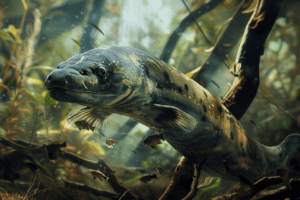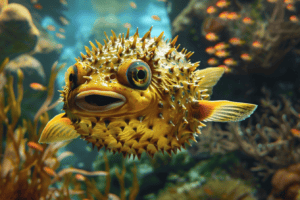Nano fish may be small in size, but their impact on the aquarium hobby is huge.
These tiny titans are captivating enthusiasts with their vibrant colors, unique behaviors, and fascinating adaptations.
In this article, we will explore the world of nano fish, from their origins to their care requirements, and everything in between.

Nano fish are a diverse group of fish that typically measure less than 1.5 inches in length.
Despite their small size, they come in a variety of shapes, colors, and patterns, making them a popular choice for aquarists looking to add some diversity to their tanks.
From the sparkling neon tetra to the colorful cherry shrimp, nano fish offer a wide range of options for any aquarium enthusiast.
While they may be small, nano fish are not to be underestimated. They have unique behaviors and adaptations that make them stand out from other fish.
For example, some nano fish have evolved to live in highly oxygenated environments, while others have developed specialized feeding techniques to survive in their natural habitats.
Understanding these adaptations can help aquarists provide the best possible care for their nano fish.
Discovering Nano Fish
Defining Nano Fish
Nano fish are tiny fish species that are usually less than an inch in length.
These fish are popular among aquarists because of their unique size, colors, and patterns. They are also known as micro fish, dwarf fish, and pygmy fish.
Nano fish come in a variety of species, including tetras, rasboras, guppies, and killifish.
They are perfect for small aquariums, nano tanks, and planted tanks.
Nano fish are easy to care for and can be kept in groups, making them ideal for community tanks.
Habitats and Ecosystems
Nano fish are found in freshwater habitats all over the world, including rivers, streams, and ponds.
They are also found in tropical rainforests and other aquatic ecosystems.
Nano fish are known for their adaptability and can survive in a wide range of water conditions.
In the wild, nano fish are an essential part of the ecosystem. They are food for larger fish, birds, and other aquatic animals.
They also help to control the population of insects and other small organisms in the water.
As more people become interested in keeping nano fish in their aquariums, it is essential to understand their natural habitats and ecosystems.
This knowledge can help ensure that these fish are kept healthy and happy in their new homes.
Fun Fact: The world’s smallest fish is the Paedocypris fish, which can grow to be less than 0.3 inches long!
Caring for Nano Fish

Nano fish may be small in size, but they require the same level of care as any other fish.
Proper aquarium setup, diet and nutrition, and health and wellbeing are crucial to keeping these tiny Titans happy and healthy.
Aquarium Setup
When setting up an aquarium for nano fish, it is important to consider their small size.
A 10-gallon tank is sufficient for most species, but larger tanks may be needed for more active or social fish.
The tank should be equipped with a filter and heater to maintain a stable environment.
Adding live plants and hiding places, such as rocks and driftwood, will provide a natural habitat for the fish.
Diet and Nutrition
Nano fish have small stomachs, so it is important to feed them small amounts of food several times a day.
A balanced diet should include a variety of high-quality flakes, pellets, and frozen or live foods.
It is important to avoid overfeeding, as uneaten food can pollute the water and harm the fish.
Health and Wellbeing
Maintaining good water quality is essential to the health and wellbeing of nano fish.
Regular water changes and testing for ammonia, nitrite, and nitrate levels are necessary to prevent disease and stress.
It is also important to monitor the fish for signs of illness, such as lethargy, loss of appetite, and abnormal swimming behavior.
Quarantining new fish before introducing them to the main tank can prevent the spread of disease.
Nano fish may be small, but they require proper care to thrive.
By providing a suitable aquarium setup, a balanced diet, and monitoring their health and wellbeing, you can enjoy the beauty of these tiny Titans for years to come.
The Role of Nano Fish in Research

Nano fish, also known as micro fish, are tiny fish species that measure less than one inch in length.
Despite their small size, these fish play a vital role in scientific research and environmental monitoring.
Scientific Studies
Nano fish are often used in scientific studies because of their small size and short lifespan.
Researchers can study the effects of environmental factors such as temperature, pH levels, and pollutants on these fish in a shorter amount of time compared to larger fish species.
This allows for faster and more efficient research, leading to a better understanding of the impact of these factors on aquatic ecosystems.
In addition, nano fish are used in genetic research due to their small genome size.
Scientists can study the genetic makeup of these fish to gain insight into the evolution of fish species and the genes responsible for certain traits and behaviors.
Environmental Indicators
Nano fish are also used as environmental indicators.
These fish are sensitive to changes in their environment and can serve as an early warning system for environmental issues such as pollution and climate change.
For example, if a population of nano fish suddenly disappears from a body of water, it could indicate a change in water quality or a decrease in available food sources.
By monitoring the populations of nano fish in various bodies of water, scientists can gain a better understanding of the health of aquatic ecosystems and the impact of human activities on these systems.
Overall, the use of nano fish in research and environmental monitoring is crucial for understanding and protecting aquatic ecosystems.
Despite their small size, these tiny titans play a big role in advancing scientific knowledge and promoting environmental conservation.
Fun Facts About Nano Fish

Nano fish are tiny creatures that have captured the hearts of many aquarium hobbyists. Here are some fun facts about these tiny titans:
-
Nano fish are small, but they come in a variety of colors and patterns.
Some of the most popular nano fish include the neon tetra, ember tetra, and chili rasbora.
-
Despite their small size, nano fish can be quite active and entertaining to watch.
They are known for their playful behavior and can often be seen darting around the tank.
-
Nano fish are great for small aquariums and can be kept in tanks as small as five gallons.
This makes them a popular choice for those who want to keep fish but don’t have a lot of space.
-
Nano fish are also relatively easy to care for. They are hardy and can tolerate a wide range of water conditions.
However, it’s important to keep their tanks clean and well-maintained to ensure their health and happiness.
-
Did you know that some nano fish are endangered in the wild? The pygmy sunfish, for example, is listed as endangered due to habitat loss and pollution.
-
Nano fish are not just popular in the aquarium hobby. They also play an important role in the ecosystem.
They are a food source for larger fish and help to keep the aquatic environment in balance.
-
Finally, nano fish are a great way to teach children about the importance of caring for animals and the environment.
By keeping a small aquarium and learning about the needs of these tiny creatures, children can develop a sense of responsibility and respect for the natural world.
Frequently Asked Questions

How big do nano fish typically get?
Nano fish are the smallest fish that can be kept in home aquariums. They are usually less than one inch in length and can weigh less than a gram.
Some of the tiniest species can be as small as a grain of rice!
Can you tell me about the smallest species of fish suitable for home aquariums?
The world’s smallest fish is the Paedocypris fish, which is native to Indonesia.
It measures only 7.9 millimeters in length and is one of the few fish that can fit on a dime!
However, it is not recommended for home aquariums due to its delicate nature.
The smallest fish suitable for home aquariums are the Boraras species, such as the Chili Rasbora and the Mosquito Rasbora.
They are only a few centimeters long and can be kept in small tanks.
What are the top considerations when setting up a tank for tiny fish?
When setting up a tank for nano fish, it is important to consider the tank size, filtration, and water parameters.
A tank that is too large can cause stress for the fish, while a tank that is too small can lead to poor water quality.
Filtration is important to maintain good water quality, and the water parameters should be kept stable to ensure the health of the fish.
Which tiny fish are known for being the easiest to care for?
The easiest nano fish to care for are the Endler’s Livebearer, the Chili Rasbora, and the Ember Tetra.
These species are hardy and can adapt to a variety of water conditions.
What kind of environment do the smallest aquatic pets need to thrive?
Nano fish need a well-planted aquarium with hiding places and open swimming areas. They thrive in a peaceful environment with minimal water flow.
The water temperature should be kept between 72-78°F for most species.
Are there any miniature fish that can live happily in a community tank?
Yes, there are many nano fish that can live peacefully in a community tank.
Some of the most popular species include the Neon Tetra, the Pygmy Corydoras, and the Celestial Pearl Danio.
However, it is important to research the compatibility of different species before adding them to the tank.









